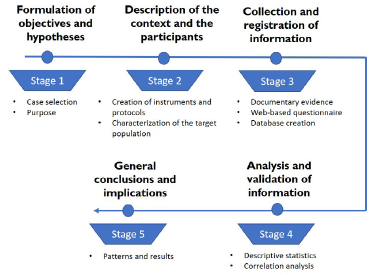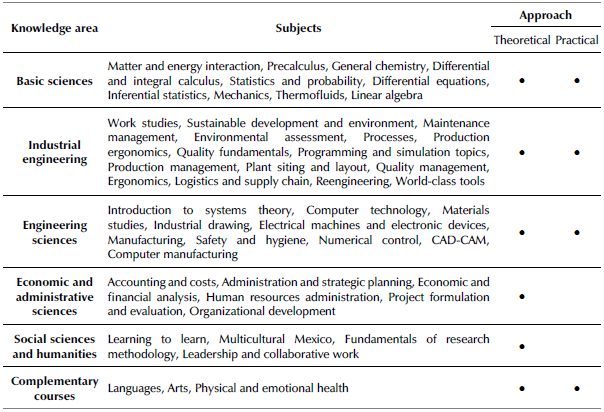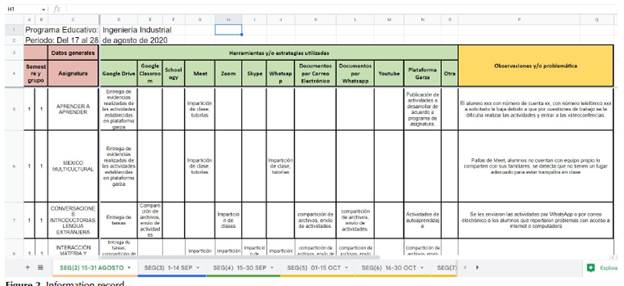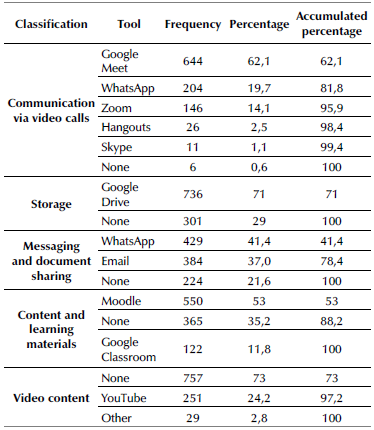Introduction
The SARS-CoV-2 virus, first reported at the end of December 2019 in Wuhan, China, has had a severe impact worldwide. The imminent spread of the highly infectious disease (COVID-19) caused by this coronavirus led to taking drastic measures in different countries, which included lockdowns. Efforts by multiple governments to stop the viral outbreak included strict protocols and regulations to facilitate social distancing (Bozkurt and Sharma, 2020).
According to data from UNESCO (2020), more than 1,5 billion students of all ages were affected due to the closing of schools and universities. This amounts to 90% of the students enrolled around the world. In light of the above, most schools, colleges, and universities sought to minimize the impact on education, transforming teaching by employing different approaches and alternatives and migrating to online environments with the help of digital tools and educational websites (Hassan et al., 2020; Mohmmed et al., 2020).
The measures taken by the countries of Latin America were the suspension of face-to-face classes at all education levels, which gave rise to the deployment of remote learning modalities through a variety of formats and platforms (CEPAL-UNESCO, 2020). Teaching was redesigned, in most cases, through the digitization of the content offered to students through various digital tools, including synchronous sessions in virtual environments (videoconferences) at the same time as face-to-face sessions would take place.
As the primary support for learning during the pandemic, the integration of information and communication technologies (ICTs) has influenced various fields of study, bringing significant changes to teaching processes (Ramya and Poongodi, 2021). In the process of educating during this kind of emergencies, ICT tools have shown their broad usefulness for teaching, playing a prominent role in advancing the learning of teachers and students, specifically in areas such as engineering (Kavitha et al., 2021).
The COVID-19 pandemic brought many challenges to higher education regarding teaching, learning, and research collaborations between government and education institutions (Mok et al., 2021). Engineering education is a specific sector of higher education where practical exercises strongly determine the effectiveness of the teaching and learning process, which includes experiments and laboratory classes. In addition, technical skills are crucial for engineers, according to the paradigm of learning by doing. Therefore, the students of engineering courses need access to laboratories, specialized equipment, and instruments in order to carry out practical experiments to acquire the technical and social skills associated with their area of specialization (Ozadowicz, 2020).
Before the pandemic, the expectations regarding the quantity and quality of education in engineering had experienced a significant increase (Ramya and Poongodi, 2021) due to the need for a technological transformation aimed at providing solutions for problems within the so-called Industry 4.0.
Focusing on the problems faced by the education sector due to COVID-19, and highlighting the challenges faced by engineering education in this context, this research raises two initial questions:
What strategies have been implemented for online engineering education COVID-19?
What technological tools have been used for remote teaching regarding the different subjects that make up an education program in engineering?
The objective is to identify, from the sociodemographic perspective of the teacher, the current technological tool with the most significant effect on the teaching of engineering in the face of catastrophic events.
Through a case study in a Latin American university positioned in the QS World University Ranking, this article shows some of the main technological tools used during the first year of the COVID-19 pandemic for remote teaching in an engineering education program.
This document is organized as follows. Literature review section outlines some of the proposals for learning engineering made during the pandemic by different universities and education centers at an international level. Method section describes the methodology used for this research, which involves a case study where the teacher identifies the technological tools used from March 2020 to March 2021. Results section presents the analyses carried out. Finally, the last section presents the discussion and conclusions of this research work.
Literature review
The exponential development of technology has allowed online education to become a viable alternative with high potential to change the paradigm of traditional learning (face-to-face conferences in a classroom) towards an education based on technological resources that promote interaction, collaboration, and learning in virtual environments (Ferreira et al., 2018). Currently, the introduction of new tools and learning methods based on approaches such as the so-called TechTeach seeks to improve the quality of teaching and increase motivation towards learning. Flipped classrooms, gamification, soft skills training, and quizzes are some TechTeach tools that have been successfully implemented in the teaching-learning processes of higher education during the pandemic (Portela, 2020).
Specifically, the teaching of engineering via online tools has been reported in the fields of electricity, computer science, and information technology (Martínez et al., 2019). However, although online education is not unknown to teachers, there are still opportunities for improvement. Some of the main weaknesses identified in this modality of teaching are, as pointed out by Dhawan (2020), Syauqi et al. (2020), and Cojocariu et al. (2014), the lack of two-way interaction, a possible loss of direct communication, isolation, the need to include a large number of didactic resources, and an excess of theoretical content that does not provide students with real practice.
Given the exceptional and unprecedented circumstances caused by the COVID-19 pandemic, in a context in which schools closed their doors in 185 countries, the opportunity to contribute to solving the weaknesses of online teaching arose (Espino-Díaz et al., 2020), revealing a need to train teachers in the use of technological tools and to adapt the different contents of the study plans to the new context of the health crisis (Asgari et al., 2021).
Aiming to provide a general overview of the subject, some proposals made by different universities and education centers worldwide were identified by reviewing the literature published in databases and academic journals.
Through a survey designed to collect perceptions about problems, pedagogical strategies, and student-teacher interactions during the teaching process, Fardoun et al. (2020) present an exploratory study conducted in Ibero-America. These authors conclude that the most used technological and material resources for monitoring and evaluating of the students in terms of the strategies and activities that support the teaching process are blogs, portfolios, forums, collaborative work, and, to a lesser extent, videos made by the students.
Among the strategies used for teaching, according to Culzoni et al. (2021), different faculties of engineering and technological universities in Argentina used platforms or virtual classrooms to respond to their students' queries, as well as information systems, videoconferences and free software for subjects in the area of exact sciences.
In Spain, some universities that offered educational programs in engineering replaced the traditional exam with a sequence of remote collaborative learning activities in order to foster students' engineering and thinking skills as well as transversal competencies (Ripoll et al., 2021).
García-Alberti et al. (2021) analyze an education program in civil engineering offered in universities in Spain and Peru. This study describes teaching and evaluation strategies including technological tools, such as virtual classrooms and videoconferences.
Through a methodological proposal to provide tools for remote education in electrical engineering, Evstatiev and Hristova (2020) present a case study of two universities in Bulgaria with regard to the adaptation of engineering classes to the context of COVID-19. The methodology of this study includes several phases: 1) an analysis of needs (including technological aspects), 2) the preparation of educational materials, 3) the selection of teaching methods, and 4) and their evaluation.
Mohd Zulkefli (2020) presents a study carried out on students of an education program in computer science in Oman. This study seeks to evaluate the effectiveness of Google Classroom as a learning tool for e-learning. The author suggests that most students perceived Google Classroom as positive due to its functionality and mobility. It is also concluded that the challenges faced by students when using Google Classroom are similar to the problems that are addressed in other e-learning platforms such as Moodle.
To identify the challenges experienced by students enrolled in different engineering departments during online classes in the spring of 2020, Asgari et al. (2021) conducted an observational study based on questionnaires applied in a university in the United States. The results show the multiple issues that negatively influence online engineering education, such as 1) technical problems, 2) learning challenges, 3) security and privacy issues, and 4) the lack of practical training in different technological tools for effective communication. These authors recommend strategies for students, teachers, and administrators to close the gap between the improvement of online engineering education and the tools and technology used for this purpose.
In India, Hassan et al. (2020) studied the teachers' perspective on the learning model based on online platforms. They analyzed the challenges and problems that arose in the migration of education to virtual environments, and they identified the tools used for teaching. The results obtained from a sample of teachers from different institutes in India indicate that a large percentage of teachers (87,5%) used WhatsApp to communicate and give instructions, while 56,9% of teachers used WhatsApp in combination with the Zoom videoconference platform. 37,5% of the teachers used Google Classroom and WhatsApp. Studies such as that conducted by Sahoo et al. (2021) analyze the consequences of the pandemic on the teaching-learning system, confirming the effects of COVID-19 on higher education institutions.
In Indonesia, Suryaman et al. (2020) conducted a study on the learning profile of engineering students during the COVID-19 pandemic, using quantitative and qualitative methods for data collection. The authors point out that, from the students' perspective, online learning applications must be accessible and combined with various applications. Among the tools for online learning, the most useful were Google Classroom, followed by WhatsApp and Zoom.
With the aim to suggest activities for teachers to implement new tools regardless of the learning modality, Kanetaki et al. (2022a) analyze the effectiveness and student participation patterns regarding videos disseminated through YouTube as asynchronous support for engineering laboratories.
Ozadowicz (2020) describes a case study carried out in a technical university, discussing the tools and methods for remote learning introduced during the COVID-19 lockdown. Tools such as videoconferences, webinars (lectures and laboratory classes), and mind maps are reported in this study as the main activities carried out during remote learning.
García Martín and García Martín's study on the use of technological tools in the Spanish education sector (2021) indicates that, during the lockdown, teachers mainly used digital devices or applications for instructional design based on electronic documents, spreadsheets, and Google or Prezi presentations.
Using a hybrid machine learning model that includes statistical analyses, Kanetaki et al. (2022b) explore the prediction of grades for a population of students in an engineering course during the first semester of the 2020 academic year.
Methodology
This research employed a hypothesis-generating case study approach, with a quantitative and qualitative methodology based on the proposals of Eisenhardt (1989), Stake (1999), and Yin (2003). The stages of this work are shown in Figure 1 and which include 1) the formulation of objectives and hypotheses, 2) a description of the context and the participants, 3) data collection and recording, 4) the analysis and validation of information, and 5) general conclusions and implications.
According to Eisenhardt (1989), Yin (2003), and Iglesias-Pradas et al. (2021) the case study methodology is used as a research strategy with the purpose of understanding the dynamics and complexity of a particular population, which also allows understanding the meaning of an experience and building theories from the early stages of a project.
For the data record corresponding to stage 3, this study considered that the selection of a specific technological tool corresponds to the instructional design used by the teacher, according to the principle of academic freedom and autonomy promoted by the analyzed institution.
Objective and hypothesis
The objective was to show the technological tools used for teaching and learning during the first year of the pandemic, considering the different subjects taught in an engineering program at a public university in Latin America. The following hypotheses were formulated:
H1. The use of technological tools for remote teaching differs depending on the area of knowledge.
H2. A teacher's use of technological tools for remote teaching is influenced by sociodemographic variables such as education level, gender, and type of contract.
Description of the context and the participants
This study was carried out at a Latin American university during the 2020 academic year, selecting a faculty located in an industrial zone with a high demand for engineering professionals. This university offers different study programs in Mexico, distributed among its other faculties, including the educational program in Industrial Engineering, on which this study was carried out. The university under study is ranked 801-1000 in the QS Global World University Ranking of 2022 and 171-180 in the LatAm University Ranking (Quacquarelli Symonds, 2021).
At the beginning of the pandemic, and for 12 months (corresponding to two semesters of the 2020 academic year), the 46 teachers of the analyzed education program were asked to record the technological tools used with their students during social distancing. The number of respondents corresponds to the total population of teachers assigned to this educational program, out of which 48% have postgraduate studies. They are 19 women and 27 men. In addition, the teachers are categorized according to the number of hours/classes they teach in person, that is, a fulltime teacher (full dedication) has a workload greater than 10 hours per week, while a part-time teacher has a workload between 5 and 10 hours per week. There is a third category of teacher with minimum workload that includes those who teach between 1 and 4 hours per week.
Among this university's tools for teaching in digital environments, the most outstanding are 1) a technological platform developed in Moodle, called Plataforma Garza, 2) an open electronic repository, 3) databases of scientific journals, 4) a YouTube channel, 5) the G Suite for Education, and 5) an iTunes U channel.
The curriculum of this education program is of the schooling type (face-to-face modality) divided in nine semesters made up of theoretical hours and teaching practices, where the student takes different subjects on basic sciences, arts and languages, manufacturing, environmental engineering, and quality, among others.
The subjects that make up this program are divided by areas of knowledge, as shown in Table 1.
According to the characteristics of the instructional design and the learning objectives, each subject has a primary focus, either towards practice, theory, or both. These subjects are classified within the areas of basic sciences (BS), industrial engineering (IE), engineering sciences (ES), economic and administrative sciences (EAS), social sciences and humanities (SSH), and complementary courses (CC).
Data collection and recording
To collect information, a quantitative study with a descriptive and correlational approach was carried out in the form of a survey. The selected questionnaire technique had the objective of providing information on the different perceptions of the participating teachers. For this case, a list of dichotomous, open-ended, and simple-selection questions was designed.
Figure 2 shows an example of the instrument used to record information from the teachers' perspective.
The data collection instrument (Figure 2) was shared via the Google Documents Web platform, which could be accessed with the institutional email account of each participant. Technological tools used were classified as 1) communication applications based on video calls, 2) storage applications, 3) messaging and document sharing applications, and 4) content and learning materials. In this Google document, teachers were asked to indicate the technological tool used for teaching, delivering assignments, sharing files, sending activities, and teamwork, among others. In total, teachers could select between 12 technological tools or indicate others. Thus, several options were provided, which included WhatsApp, Zoom, Google Classroom, and YouTube.
Additionally, teachers were asked to record, some of the main problems they encountered during their remote sessions.
In total, during the first year of the COVID-19 pandemic, records of 1 037 sessions were obtained for the 341 students who make up this education program.
Analysis and validation of information
In this stage, descriptive statistical analyses were carried out to learn about the main technological tools used by teachers in the different subjects and areas of knowledge. The validity and reliability of the information obtained from the questionnaires were evaluated using the SPSS software.
The observed frequencies were compared to the expected ones via Chi-square statistics, considering Equation (1):
where n indicates the observed frequencies and m the expected ones, with i being any row and j any column within an array of two qualitative variables, to test the hypothesis that the classification criteria are independent (i.e., technological tools, area of knowledge, and sociodemographic variables). In this analysis, p<0,05 was considered to be statistically significant value.
With the previous stages, and using the information obtained through descriptive statistics and correlational analysis, the general conclusions and implications for this case study were drawn.
Results
Descriptive statistics
The data obtained from teachers with regard to the first year of the pandemic (March 2020 - March 2021) were collected, organized, and analyzed using SPSS version 21. In the first analysis, descriptive statistics related to the use of the tools were performed. As shown in Table 2, Google Meet was the primary tool for communication via video calls, with WhatsApp and Zoom occupying the second and third place, respectively. The highest percentages of use for Google Meet were reported for Material and energy interaction, General chemistry, Differential equations, and Inferential statistics, subjects taught by four professors (three part-time professors, and one full-time professor).
Concerning storage tools, Google Drive was the most commonly used, with 71%, in addition to WhatsApp for messaging and sharing documents. The highest percentages reported for Google Drive corresponded the subjects of Matter and energy interaction, Chemistry, and Fundamentals of research methodology. Meanwhile, WhatsApp was used more frequently in Languages, Materials studies, and Calculus, subjects taught by four part-time professors.
As shown in Table 2, the content tool of choice for learning materials was Moodle, as Plataforma Garza was the most widely used tool in all subjects. In the case of video content, most teachers did not use a specific device. YouTube was mainly used in specific Language subjects, which were taught by four part-time teachers.
Google Forms, Quizizz, Khan Academy, Idroo, Pixton, Genially, and Jamboard were other options reported in particular cases by some teachers. The subjects that reported very little use of technological tools were Arts, Sustainable development, Accounting and Costs, and Numerical control, which were taught by part-time teachers.
Areas of knowledge
Subsequently, the descriptive statistics of the technological tools used in the subjects grouped by areas of knowledge were carried, aiming out to understand the relationship between these categorical variables (Table 3). These results are shown below.
Communication via video calls: The most used technological tool for communication via video calls was Google Meet, with 81% in the IE area, 67% in SSH, 63,2% in EAS, 61,4% in BS, 52% in ES, and 54,5% in CC. Zoom and WhatsApp ranked second as video call communication tools, mainly in the areas of CC, ES, and BS, with 29,9, 17,9, and 10,5%, respectively.
When the Chi-square test regarding the relationship between the video call communication tools and the areas of knowledge was performed, an asymptotic significance level of 0,00 was obtained (considering a value of a=0,05). Therefore, statistically sepaking, there is a relationship between the two variables.
Storage: Of the tools used for storage, the most used in SSH, CC, BS, IE, and EAS was Google Drive, with 69,1, 71,9, 74,4, 76,8, and 80,5%, respectively. This tool was predominant for teachers, except for the ES knowledge area, where 44,7% of the participants did not use any storage tool. When evaluating the relationship between technological storage tools and the areas of knowledge, an asymptotic significance level of 0,00 was obtained, with a value of a=0,05. Therefore, statistically speaking, it can be considered that there is a relationship between both variables.
Messaging and document sharing: The primary tool used for messaging and sharing documents was WhatsApp in the CC, BS, and ES areas, with 48,2, 47,4, and 36,8%, respectively. Meanwhile, email was the most widely used tool in SSH with 39,4%, as well as in EAS with 46%. The very little of the IE area used a tool for messaging and sharing documents (37,5%). Regarding the relationship between these tools for messaging and sharing documents and the areas of knowledge, an asymptotic significance level of 0,00 was obtained, with a value of a=0,05, so, statistically speaking, there is a relationship between these variables.
Content tools and learning materials: Moodle was the main tool in SSH, CC, BS, IE, EAS, with 64,9, 43,3, 54, 59,5, and 60,9%, respectively. Google Classroom was also used in all areas. However, in most cases, ES did not report the use of a specific tool for learning.
According to the Chi-square test performed, an asymptotic significance level of 0,00 was obtained (considering a value of a=0,05), so, statistically speaking, it can be assumed that there is a relationship between the tools used and the areas of knowledge.
Video content: In all areas of knowledge, the use of video tools was not predominant. The most relevant participation of YouTube tool was reported in BS, EAS, and CC with 30,9, 28,7, and 26,8%, respectively. Regarding the relationship between this tool and the areas of knowledge, an asymptotic significance level of 0,00 was obtained (considering a value of a=0,05). Thus, there is a relationship between these variables.
Note that, in all cases, there is a statistical relationship between the technological tool used by the teacher and the area of knowledge.
As shown in Table 3, the results obtained indicate that Google Drive, Google Meet, WhatsApp, Moodle, and YouTube exhibited a higher frequency of use in Basic Sciences and Industrial Engineering. Zoom was also used by teachers in Complementary Courses such as Languages, Arts, and Occupational health.
In contrast, the teachers who taught courses in the areas of Social Sciences and Economic and Administrative Sciences were the ones who reported the lowest use of technological tools to offer remote learning courses.
Sociodemographic variables
To verify the H2 hypothesis raised at the beginning of this research, a second analysis was carried out which considered the qualitative variables of the teachers. For this second analysis, statistical association measurements were also used, accompanied by a significance test regarding the sociodemographic variables of education level, gender, and contract type (Table 4).
Table 4 Analysis of sociodemographic variables
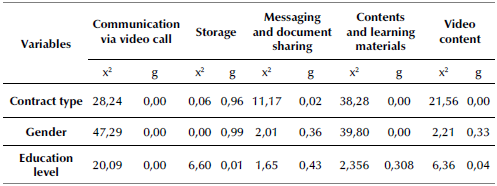
X^2= Pearson’s Chi-square; g = asymptotic significance (bilateral)
Source: Authors
Communication via video calls: An independence hypothesis test was carried out, finding that the communication tools are indeed related to sociodemographic variables. On the other hand, based on the statistical value of Pearson's Chi-square test, the null hypothesis of independence between the categorical variables can be rejected.
Storage: According to the statistical value of Pearson's Chi-square test, the contract type and gender are independent of the storage tool used by the teachers. However, the academic degree is indeed related, so the independence hypothesis is rejected.
Messaging and document sharing: The education level and gender are independent of the tools used in this regard. According to the independence hypothesis test, there is a relationship between the type of contract and use of messaging and document sharing tools.
Content tools and learning materials: The independence hypothesis test results indicate that the type of contract and gender are related to teachers' content tools and learning materials. In the opposite case, the academic degree variable is independent. An asymptotic significance level higher than a=0,05 was obtained.
Video content tools: It was found that the contract type and the education level are related to the use of these tools. Gender was found to be independent due to the value obtained in the Chi-square test.
Discussion
Due to COVID-19, severe challenges emerged in higher education, which can be analyzed from the teacher and the students' perspective, as well as from the learning contents. The strategies applied for the continuity of the teaching and learning processes during the pandemic were mainly based on different open technological platforms.
In this case study, it can be observed that, for the field of engineering, the most valuable tools were related to Google platforms, as is the case of Meet and Drive. This, in addition to technological tools such as Moodle for content and WhatsApp for communication and messaging between teachers and students.
The use of digital technologies associated with Industry 4.0 requirements and trends are also factors that must be considered regarding the learning competencies taught in virtual environments and, in general, for the graduation profile of engineering students (González-Hernández and Granillo-Macías, 2020).
Although technological tools for learning are diverse and constantly growing, there is still a significant gap between them and the students. In the records provided by the teachers regarding the main problems that occurred during the delivery of remote sessions, the students' lack of response to messages and video call sessions was recurrent. This was mainly caused issues involving Internet access, limitations regarding economic and technological resources, or illness derived from COVID-19. Another complication reported by the teachers involved getting the students to focus and pay attention during remote sessions.
The different areas of knowledge in engineering also pose a challenge for teaching in virtual environments. In most cases, the technological tool used by the teacher was related to the area of knowledge. For example, the teachers used tools such as Google Meet and WhatsApp in areas like BS or IE, and, in other areas related to complementary courses, they used tools such as Zoom and YouTube.
In particular, platforms such as YouTube were little explored by the participants of this study, although this tool, according to Kanetaki et al. (2023), has proven to be effective for learning in engineering.
The results reveal that, from the perspective of the teacher, for the field of engineering, the tools with the most significant effect, which in some cases are essential for teaching during a pandemic, were those related to the G Suite, WhatsApp, and Moodle.
The relationships between the studied sociodemographic variables and the tools used by teachers stand out. The contract type is dependent on communication tools, messaging and document sharing, content and learning materials, and video content. In contrast, the education level is independent of the messaging and document sharing and content and materials categories.
Conclusions
Based on the results obtained, the strategies applied for the continuity of teaching and learning activities during the quarantine were based on different technological platforms freely accessible for students and teachers. In this study, the areas of knowledge in an engineering program and their relationship with teachers' technological tools were analyzed. It was determined that, although there are areas that can be brought to virtual environments through different technological tools, there are other areas that, due to their orientation towards laboratory practices, require the use of various tools and communication methods.
As future work, the need for future training courses in technological tools is proposed. This would allow teachers to be more flexible and adapted to the particular needs of each area of knowledge. Additionally, it is necessary to promote plans for the expansion and consolidation of knowledge in specific tools for teaching in virtual environments, with a focus on engineering education, from the basic to the complementary areas.
Given the current scenario regarding education (and especially engineering programs), universities must make additional efforts to ensure that online learning continues to meet the rigorous requirements of national higher education accrediting bodies such as the Inter-Institutional Committees for the Evaluation of Higher Education (CIEES) and the Engineering Teaching Accreditation Council (CACEI) of Mexico, as well as international entities such as the Accreditation Board for Engineering and Technology (ABET).














